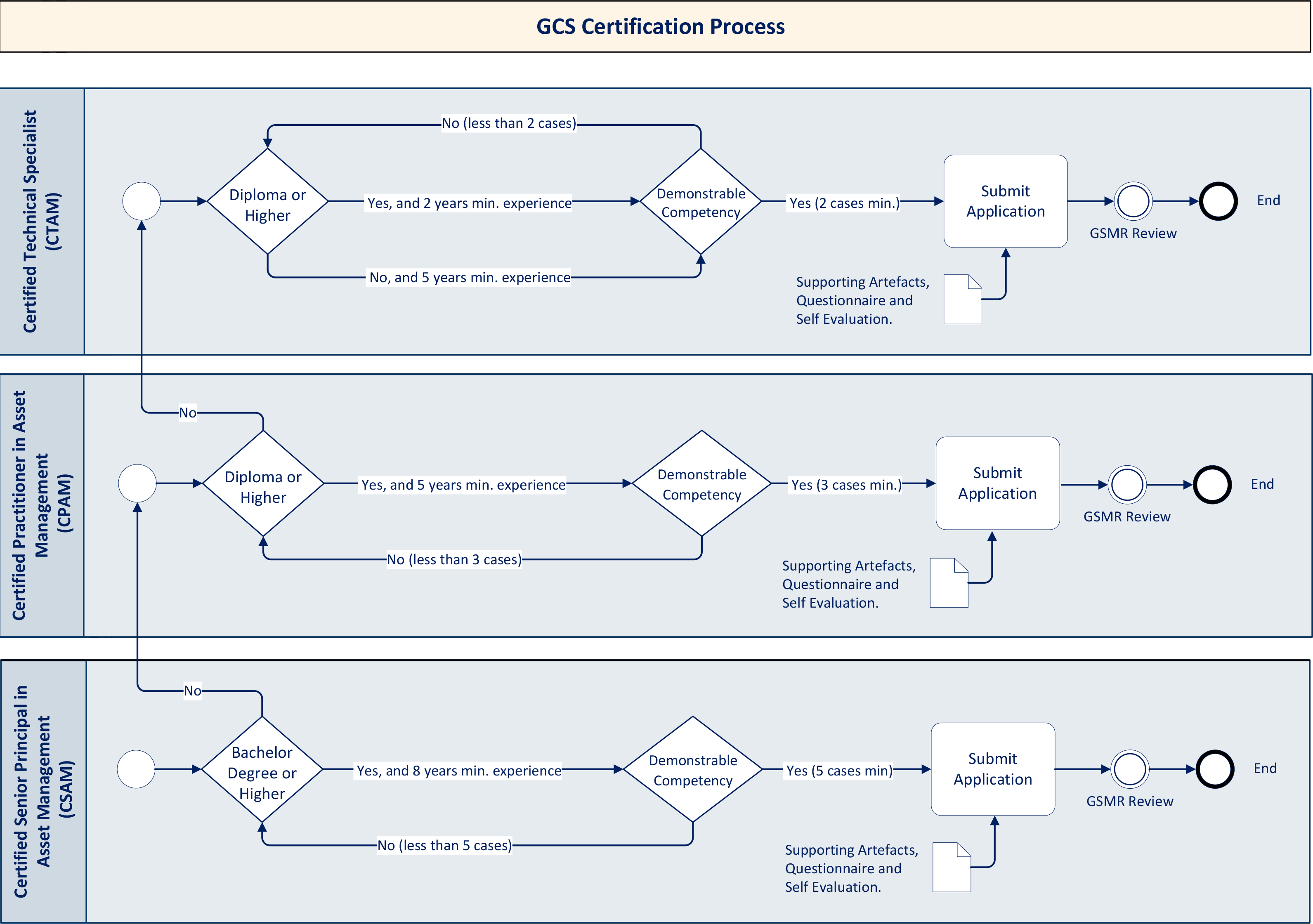WPiAM Global Certification Scheme
In keeping with its vision of “Globally recognised Asset Management credentials” the World Partners in Asset Management (WPiAM) has developed a framework for alignment of professional credentials in Asset Management to which professional bodies, post-secondary and training institutions around the world can align over time.
The scheme provides a laddered career path in asset management for individuals who are looking to advance their skills and improve their ability to contribute to the success of the organisations they serve. This competency-based scheme will allow organisations to ensure that the individuals they hire anywhere in the world have the knowledge, skills and experience to apply asset management principles in various contexts.
The process for recognising the equivalence of specific credentials will be administered by the WPiAM. The process to recognise individuals’ accreditation to any of the WPiAM’s framework credentials will be administered by the organisation that owns the certification scheme that has been approved. Each credential will require demonstration of education as well as evidence of competence in practical application.
GSMR-Global Certification Scheme
The Gulf Society for Maintenance and Reliability (GSMR) is a non-profit organization that provides support to maintenance, reliability, and asset management professionals in the Arabian Gulf region. This support is offered through conferences, symposiums, technical seminars, training, and certification events. The GSMR is one of the eight partner organizations that make up Word Partners in Asset Management (WPiAM) and participates in its offering of the GCS.
WPiAM developed the GCS to support the professionalization of asset management globally and provide a laddered career path for individuals looking to expand their skills and receive global recognition for their knowledge and competency as an asset management professional.
This competency-based scheme provides a structure that organizations anywhere in the world can use to ensure that recruits have the knowledge, skills, and experience to apply asset management principles in various contexts. It also provides professionals with global recognition, including transportability and transferability for their asset management competency and career path


